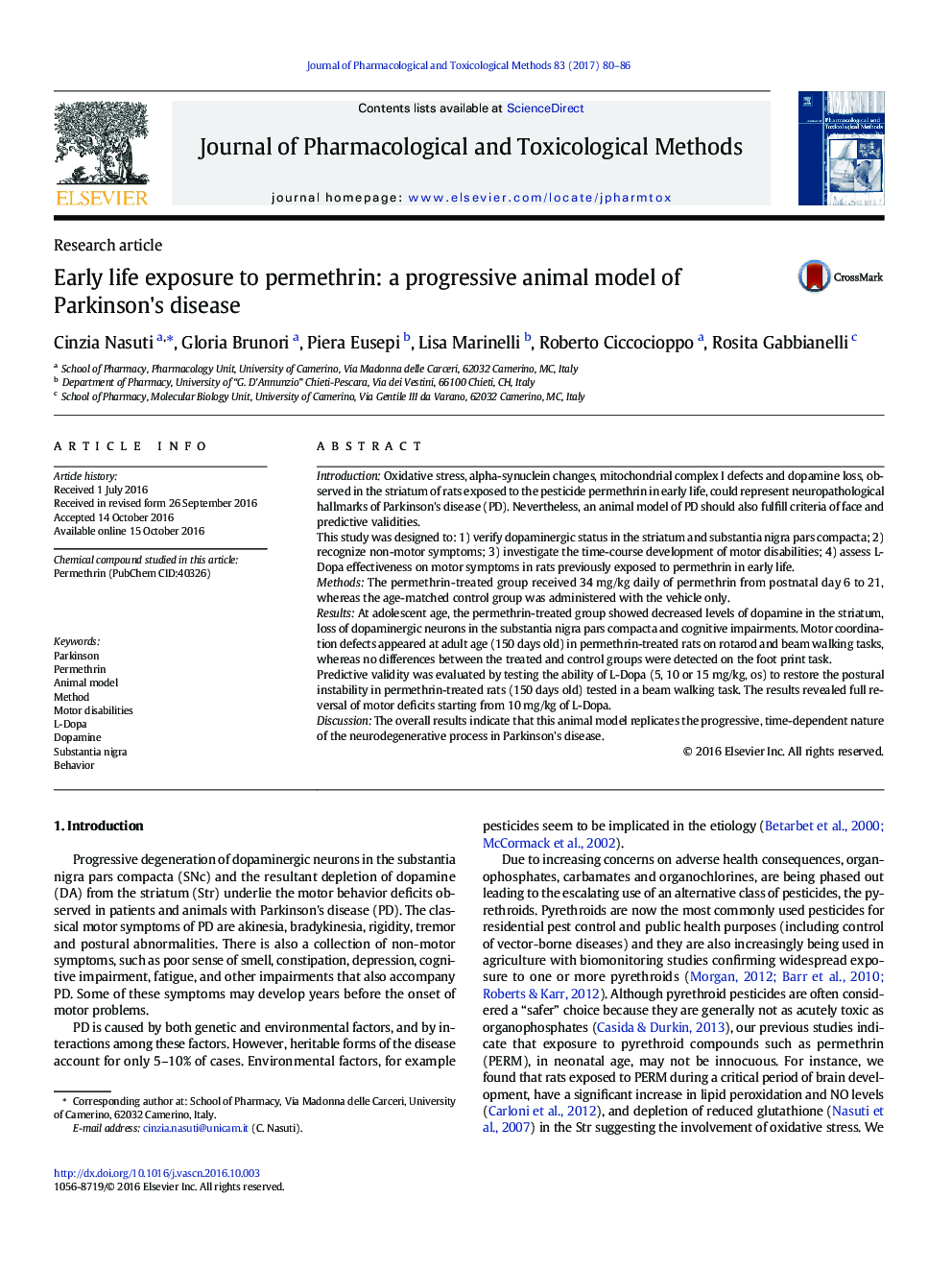| کد مقاله | کد نشریه | سال انتشار | مقاله انگلیسی | نسخه تمام متن |
|---|---|---|---|---|
| 5556582 | 1560480 | 2017 | 7 صفحه PDF | دانلود رایگان |
IntroductionOxidative stress, alpha-synuclein changes, mitochondrial complex I defects and dopamine loss, observed in the striatum of rats exposed to the pesticide permethrin in early life, could represent neuropathological hallmarks of Parkinson's disease (PD). Nevertheless, an animal model of PD should also fulfill criteria of face and predictive validities.This study was designed to: 1) verify dopaminergic status in the striatum and substantia nigra pars compacta; 2) recognize non-motor symptoms; 3) investigate the time-course development of motor disabilities; 4) assess L-Dopa effectiveness on motor symptoms in rats previously exposed to permethrin in early life.MethodsThe permethrin-treated group received 34Â mg/kg daily of permethrin from postnatal day 6 to 21, whereas the age-matched control group was administered with the vehicle only.ResultsAt adolescent age, the permethrin-treated group showed decreased levels of dopamine in the striatum, loss of dopaminergic neurons in the substantia nigra pars compacta and cognitive impairments. Motor coordination defects appeared at adult age (150Â days old) in permethrin-treated rats on rotarod and beam walking tasks, whereas no differences between the treated and control groups were detected on the foot print task.Predictive validity was evaluated by testing the ability of L-Dopa (5, 10 or 15Â mg/kg, os) to restore the postural instability in permethrin-treated rats (150Â days old) tested in a beam walking task. The results revealed full reversal of motor deficits starting from 10Â mg/kg of L-Dopa.DiscussionThe overall results indicate that this animal model replicates the progressive, time-dependent nature of the neurodegenerative process in Parkinson's disease.
Journal: Journal of Pharmacological and Toxicological Methods - Volume 83, JanuaryâFebruary 2017, Pages 80-86
